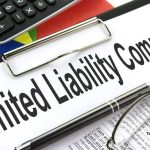Commercial Energy Cost Optimization: Steps to Reduce Expenses and Increase Efficiency
In today’s competitive business landscape, finding ways to optimize costs is crucial for commercial entities. One major area where cost optimization can be achieved is in managing the energy expenses. With rising energy prices and increasing environmental concerns, it is imperative for businesses to focus on commercial energy cost optimization. This article will outline some practical steps that can be taken to reduce energy expenses and increase overall efficiency.
Conduct an Energy Audit
The first step in optimizing commercial energy costs is to conduct a comprehensive energy audit. This audit involves analyzing the energy consumption patterns and identifying potential areas for improvement. By hiring an energy expert or utilizing energy management software, businesses can gain valuable insights into their energy consumption habits, identify energy wastage, and uncover opportunities for optimization.
Implement Energy-Efficient Practices
One of the most effective ways to reduce energy costs is by implementing energy-efficient practices throughout the … More >>>













